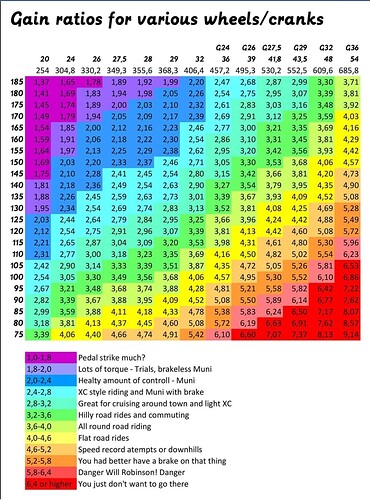I need to first say: I’m by no means a talented schlumpf rider. But I have recent experience of learning.
I am also building a G24 alongside a G29… so I can relate to the decision making here. (Kinda, as getting both  )
)
First off: as for a Schlumpf being harder. Yes I think they are, initially - but with practice I believe they become more normal.
I’m in the stage where I still get more of a workout from riding my G26 verses my normal 29er… that’s probably due to partly the muscles I’ve yet to train up for the new wiring needed for geared riding - but also the sheer mental focus. As I feel you do need to rework your mental picture of what unicycle riding is.
Now: purpose - for me I unicycle as I get a buzz from it. It’s pleasure at the end of the day. Be that from the zoned in focus, physical effects of the exercise, or doing something that feels kind of impossible - a challenge overcome.
Geared riding for me is just: ONE MASSIVE TRIPPY EXPERIENCE. When it clicked for me, I was on a super high. Not just high gear but some kind of euphoria.
There’s nothing really practical about geared riding, but perhaps it makes unicycling feel a tad more “advanced” or versatile than fixed riding. I don’t really know or care.
There’s clearly those who take any discipline to the next level - and go UniTouring with a geared wheel. It’s amazing. Maybe one day I might consider it - but I’d probably prefer the simplicity of a fixed wheel if going for hundreds of miles.
I expect that when taking wheels on a plane is limited to events - taking a geared 29er could be the best of all worlds, but it would be for a specific event where I have trained up to take part in. So in some ways you do need to find projects or events to use a geared wheel - but I’m thinking it might start making me go to events more and purposefully train to take part competently.
(I’m conscious of writing tons - and that this coming from someone with admittedly limited geared skill, might smack of hubris, so I’ll wind down)
Regarding the the 24” wheel - I expect it to be more twitchy and require more focus than a bigger wheel geared up.
It’s been said before. This is primarily I believe why G36ers are popular. Yes they can be used for going crazy fast, but also for going moderately fast with a nice cadence.
I suspect due to the twitchiness of a G24 ride I won’t be going that fast. But I will be more mentally able to ride in more crowded spaces I feel.
My hope is I can pack this up for trips to mainland Europe. Plane, Train, Bus - all feel way more doable, and I can even get a rucksack if I so wish to carry it.
I like the idea (and I say idea as I have no clue if it’ll prove true) of being able to ride around a city somewhere - paths etc and when it opens up have a bit more scope to cruise along faster, with a nice bike-like cadence.
People please correct me if I am wrong here but my understanding and perhaps a lesser commented on aspect of riding in high gear is the increased wheel turning leverage you get. The balance envelope is (I think) a lot smaller, but also your power to drive the wheel forward is amplified by the gearing. This means that while a 24” wheel is going to be twitchy and need a lot of focus over bumps, the power to get over them is there under your feet.
The leverage is also forwards and backwards - which took me a while to trust and feel, but this means that braking (with your legs - back pedal pressure) is also increased.
My taste of riding my old G36 - the initial sensation was the wheel was very “weighty”. I don’t actually mean heavy, but the power you need to turn it at first felt almost impossible. All while trying to keep balance (L/R) in point.
When G26er riding clicked I recognised I was putting my centre of gravity in what felt way more over the front of the wheel than on my fixed wheels - so much so it almost feels like you’re doubly trying to fall. On tiptoes wanting to hit the ground. All of this is re-wiring the brain’s approach to unicycling and when you feel it click it’s a boost.
I will draw this long deep personal dive into my views and feelings on this topic to a close. Hope it helps and doesn’t re-tread old ground.
